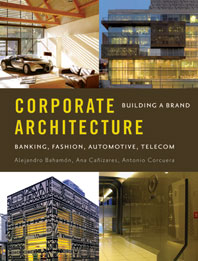In architecture, it’s always awards season. The field now has dozens of programs, bestowing hundreds of prizes each year, many of them online only. You have to wonder if the glory of winning isn’t diminished in such a crowded arena of supposedly superlative architecture.
Some prizes continue to carry a special distinction. The Pritzker Prize, just announced this month, is still the most prestigious, despite coming under fire in the past (including here on this page) for the lack of diversity among its winners. Initiated in 1979, it comes with a $100,000 check and a nice bronze medal. The independent jury that chooses the winning architect each year—under a shroud of secrecy the FBI could only envy (leaks are rare)—actually visits the contenders’ projects, which gives the prize unusual credibility.
The AIA Gold Medal remains a major accolade, too, and can be a career booster, except when it’s awarded to someone who is already dead. Two recent deceased honorees—both prolific California architects—seem to have been chosen as recompense for the historic maleness and whiteness of the award: Julia Morgan (1872–1957) was the first woman to win, in 2014, and Paul Revere Williams (1894–1980), this year’s winner, is the first African-American to be honored.
While all the AIA awards are the profession’s means of celebrating its own, prizes from other organizations often reflect a specific mission. The Aga Khan Award for Architecture, for example, is given every three years to recognize built work that serves Muslim populations around the world. Short-listed projects are visited and rigorously vetted, and winners are well rewarded: in 2016, a prize of $1 million was shared among those behind the six top designs. The Richard H. Driehaus Prize at the University of Notre Dame, known for its especially generous $200,000 award, goes to an architect each year whose work embodies classical ideals. The biannual Berkeley Rupp Prize, for an architect who has helped the advancement of women, comes with a $100,000 award and a visiting professorship at the University of California at Berkeley.
Some architecture prizes not only connect to an organization’s purpose, but help support it. That’s true for the Cooper Hewitt National Design Awards, which honors an architect or firm at its annual fund-raising gala, and the Chicago Athenaeum’s American Architecture Awards for projects in the U.S. or those by American architects.
But now the number of honors handed out each year is exploding, thanks to the Web and a global audience for architecture and design. In 2012, Architizer, the site devoted to buildings and products, launched its annual A+ Awards, with a cast of famous jurors and a lengthy roster of winning projects. Last year, the Architizer awards actually had more judges (over 400) than honorees (245)—not counting the 400,000 respondents who voted online for their favorite projects, according to the website.
Add to the flood of awards the new American Architecture Prize (AAP), which sounds confusingly like the Chicago Athenaeum’s prize. The AAP gave three top honors its first year, 2016, while, according to its website, “hundreds” of other projects in more than 40 categories were “awarded titles of platinum, gold, silver or bronze along with honorable mentions from our many distinguished submissions.” Like the Architizer A+ Awards, AAP recruited some well-known judges from the world of architecture. And, like several other award programs, it doesn’t give cash awards but does collect fees. Architects are solicited to submit projects for $300 each, which can add up to a tidy sum, if firms enter more than one work.
Such prizes, casting a wide net, reflect a populist, democratic approach to design, and that’s not necessarily a bad thing. New architectural work can be discovered, and emerging firms can get a leg up. But because many of these awards are only possible because of the Web—through which work is submitted, judged, and ultimately publicized—the image of architecture, not the experience of architecture, becomes the basis for recognition. And if your project—whether built or just a rendering—is honored along with hundreds of others, it dilutes the potency of a prize. When everyone’s a winner, how big a deal can that be?





